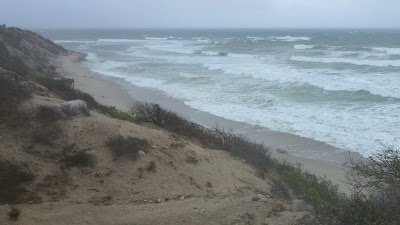Whenever I write these blogs I first peruse the
photos I have recently seen to get my inspiration for how to start the text.
Not at all unlike when as a teacher I chose something special to start my
lecture for the day. Well, today I chose this picture.
There is something truly majestically serene in
the eyes and poise of this Bengal Tiger that touched my heart. Part of the
reason is because there is a look (or at least interpreted by me) of an old
warrior that has seen much and is gazing now on an unsure drama played out in
front of him. Yes, of course I am identifying and perhaps it is due mostly to
knowing that the two souls I helped bring into this world are devoting their
lives to service, equality, environmental preservation and peace. Therefore, I
can rest and know that my days of service (the little that I have been able to
contribute) are coming to a close. I also know that the path they have taken is
not an easy one, especially now. Nevertheless, I know that they will not give
in and that there are many, many others out there willing to fight “The Good
Fight”. I honor you all, may The Great Mystery be with you always.
When as a child I was coerced into attending church
(very occasionally, Vikings have never been particularly drawn to The One God)
I was always so relieved when the pastor said, “and so endeth the epistle”. And
so here endeth my epistle!
I have, like so many others, found a special peace
with what I refer to as “The Critters”. This includes everything from bacteria to
blue whales so I find myself soothed by looking at them (the bacteria are a bit
hard to see but I spent 5 years in grad school looking through a microscope so
my imagination is vivid) as I am sure most of you do. Here are some I have
chosen to share – well, just because!
There are millions of species we have yet to meet. The fact
that much of Earth’s biodiversity is still undiscovered, writes William
Laurance, has huge implications for our conservation priorities. bit.ly/2r7sBWQ
I've got a couple of these guys (Kingfishers) arriving pretty soon that hunt the reef.
A member of "The Reptile People"
A favorite of mine, the mountain gorilla
I highly recommend the book, "Elephant Company"
Caterpillar of the Saturniidae moth
A new study in the
journal Scientific Reports suggests the Malagasy striped whirligig beetle Heterogyrus
milloti is an ultra-rare survivor among contemporary species on Madagascar,
boasting a genetic pedigree stretching back at least 206 million years to the
late Triassic period.
Cool or what?
First time I have seen an ant wasp dragging a Black Widow after a kill
To maintain this extraordinarily beautiful diversity of life we have to watch our water. Here’s somebody doing some very critical work in that area – kudos amigo!

"As we warm up the planet, the consequences for a community's natural ecosystem will depend on dispersal," said Dr. Jon Benstead, a freshwater ecologist and UA professor (my alma mater for grad school) of biological sciences. "Communities will change and receive new species that can disperse that not only do well under those warm conditions, but can get there.
And if you think it is just here on earth that
this is an issue then you haven’t been keeping up with what’s happening out
there in other parts of the galaxy.
NASA's Kepler space
telescope team has released a mission catalog of planet candidates that
introduces 219 new planet candidates, 10 of which are near-Earth size and
orbiting in their star's habitable zone, which is the range of distance from a
star where liquid water could pool on the surface of a rocky planet.
https://www.sciencedaily.com/releases/2017/06/170620123331.htm
https://www.sciencedaily.com/releases/2017/06/170620123331.htm
https://news.nationalgeographic.com/2016/08/earth-mass-planet-proxima-centauri-habitable-space-science/
And there may still be liquid water on Mars!
Liquid water, suns energy, minerals, atmosphere……well, just maybe LIFE! No need
to envision “Martians”, just the same kind of life found in geothermal vents in
Yellowstone.
"Ancient, deep-water hydrothermal deposits in Eridania basin represent a new category of astrobiological target on Mars," the report states. It also says, "Eridania seafloor deposits are not only of interest for Mars exploration, they represent a window into early Earth." That is because the earliest evidence of life on Earth comes from seafloor deposits of similar origin and age, but the geological record of those early-Earth environments is poorly preserved.
"Ancient, deep-water hydrothermal deposits in Eridania basin represent a new category of astrobiological target on Mars," the report states. It also says, "Eridania seafloor deposits are not only of interest for Mars exploration, they represent a window into early Earth." That is because the earliest evidence of life on Earth comes from seafloor deposits of similar origin and age, but the geological record of those early-Earth environments is poorly preserved.
OK – a peaceful breather before more science etc. “FEEL”
this place, meditate for three minutes on it and it will change your day! Ahhh….come
on, you can do it.
Devil’s Punchbowl Falls, New Zealand
Devil’s Punchbowl Falls, New Zealand
How about some
anthropology. So much to learn and I wasted a fair amount of time. Well, not
really. I did what I was, by my genetics and street wisdom (including higher
education), compelled to do – and it has been like everyone’s – a bit good a
bit bad. Overall – but “RICH”!
A molar tooth found at
the archaeological site of Denisova cave provided crucial genetic evidence for
the existence of the Denisovans—a hominid species discovered in only 2010. The
tooth belonged to a woman who lived more than 50,000 years ago.
http://news.nationalgeographic.com/2015/11/151116-denisovan-human-anthropology-ancient-dna/
http://news.nationalgeographic.com/2015/11/151116-denisovan-human-anthropology-ancient-dna/
Here’s an article to
go along with that, that pushes Homo sapiens back to around 350,000 years ago –
Africa of course.
https://www.sciencenews.org/article/ancient-boys-dna-pushes-back-date-earliest-humans
https://www.sciencenews.org/article/ancient-boys-dna-pushes-back-date-earliest-humans
And now some real time stuff, stranger than
fiction.
Same time, same planet, two very different realities.
New York City
Nyangatom woman - Omo River Valley, Ethiopia. Closest blood line to the ancient Egyptian Nubian Pharaohs
https://www.lifecoachcode.com/2017/09/21/scientists-discover-biophotons-in-the-brain-hint-consciousness-light/
A TTS Academy concept
for a vehicle drawn by Stephen Justice, embodying the technology they seek to
understand and develop - a visionary concept for a revolutionary
electromagnetic vehicle based on technology observed in unidentified aerial
phenomena,
According to a new
documentary, Egypt’s Great Pyramid: The New Evidence, Khufu’s engineers solved
the problem of transporting materials by rerouting the Nile River to within
feet of the building site. Khufu’s engineers came up with the ambitious
idea of hand-digging canals deep and wide enough to carry transport boats and
setting up a system of dykes to control the flow of the Nile.
http://www.thevintagenews.com/2017/10/04/new-evidence-explains-how-the-great-pyramid-of-giza-was-built/
http://www.thevintagenews.com/2017/10/04/new-evidence-explains-how-the-great-pyramid-of-giza-was-built/
NAMASTE’

















































